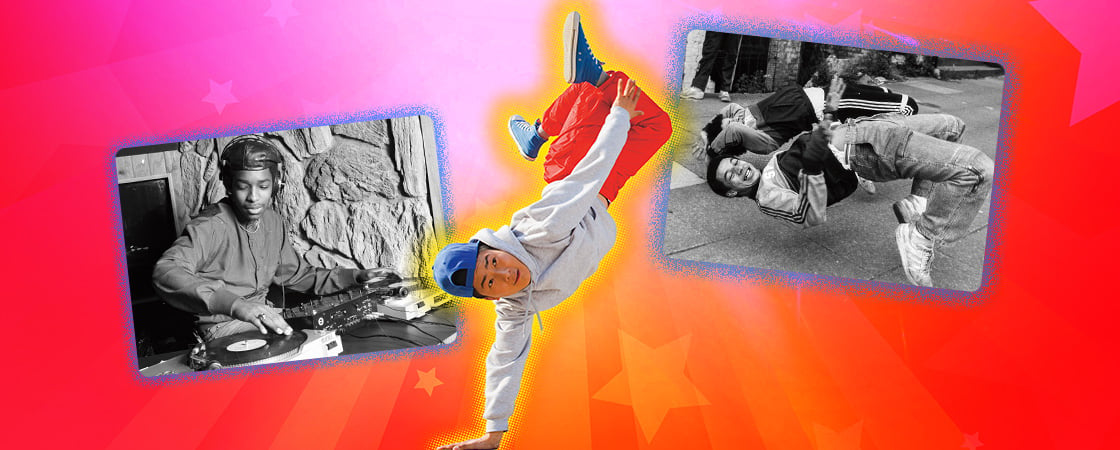Courtesy of Reggie Peters
Reggie Peters
When Reggie Peters was your age, the playground was the place to be—but not because of the swings and slides.
It was the summer of 1979 in New York City. Every day, people came to the playground with crates of records and turntables. Others brought drums, horns, and flutes. Teens showed up in striped tracksuits and flashy sneakers. Young people—from kindergarteners to college students—would gather to enjoy the music. But enjoying the music meant more than listening. It also meant dancing.
As the music played, kids laid out a piece of cardboard on the concrete. Then the real show would begin.
One after the other, the teens stepped up to the cardboard to show off their moves. They flowed through fancy footwork. They spun on their heads. They flipped upside down.
With each trick, the crowd would go wild.
You might know this form of dance as breakdancing, but its creators called it breaking.
Reggie, then 11, was mesmerized.
“I needed to learn this art,” he remembers thinking.
He wasn’t the only one who felt that way. Breaking was a whole new form of dance. And it was about to take over the world.
When Reggie Peters was your age, the playground was the place to be. But not because of the swings and slides.
It was the summer of 1979 in New York City. Every day, people went to the playground. They brought crates of records and turntables. Others brought drums, horns, and flutes. Teens showed up in striped tracksuits and flashy sneakers. Young people gathered to enjoy the music. But enjoying the music meant more than listening.
It also meant dancing.
As the music played, kids laid out cardboard on the concrete. Then the real show would begin.
One after the other, the teens stepped up to the cardboard. They showed off their moves. They did fancy footwork. They spun on their heads. They flipped upside down.
With each trick, the crowd would go wild.
You might know this form of dance as breakdancing. But its creators called it breaking.
Back then, Reggie was 11. He was mesmerized.
“I needed to learn this art,” he remembers thinking.
He wasn’t the only one who felt that way. Breaking was a new form of dance. And it was about to take over the world.



